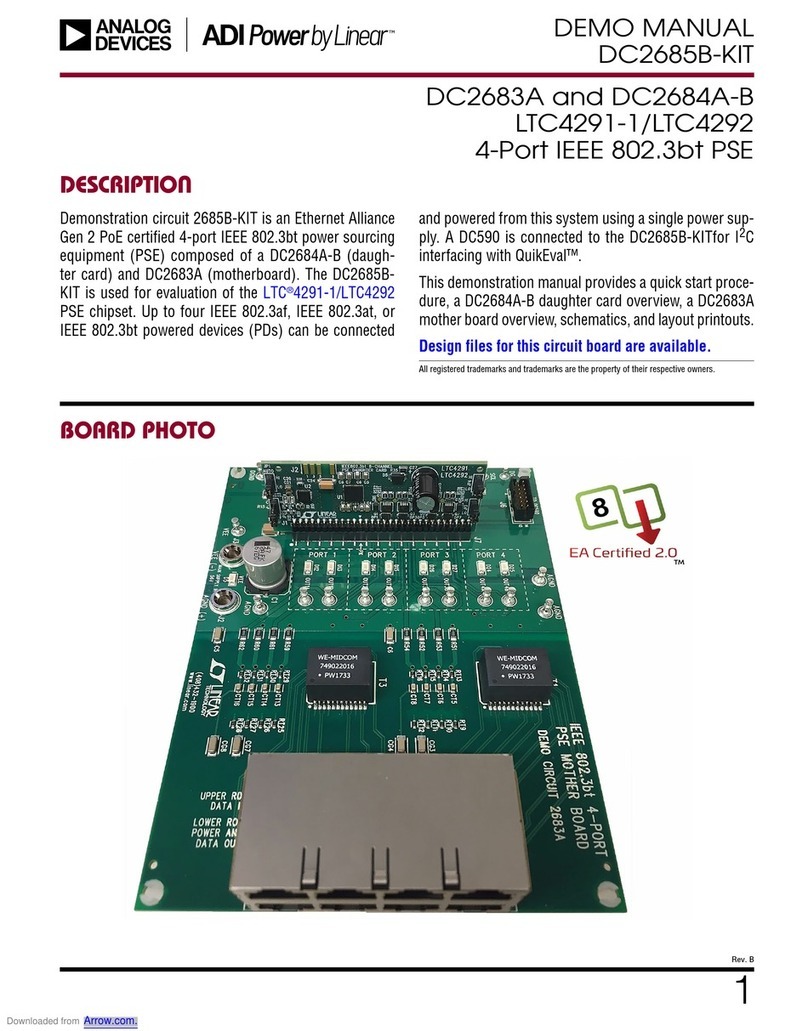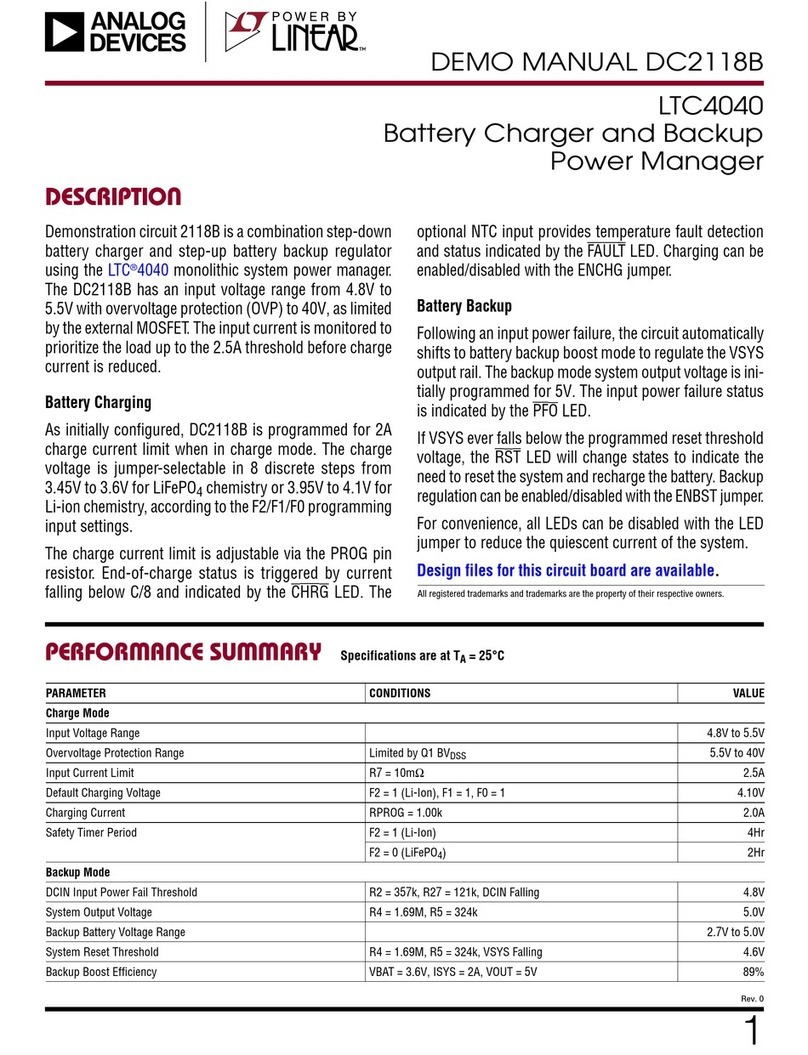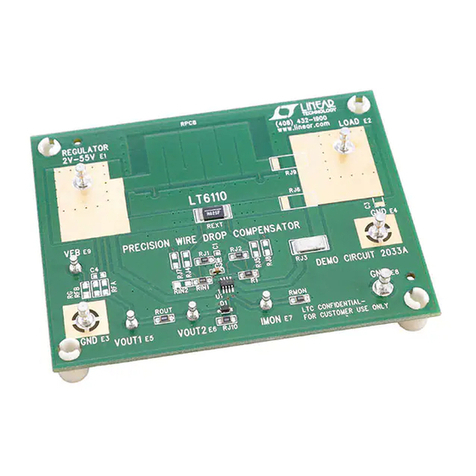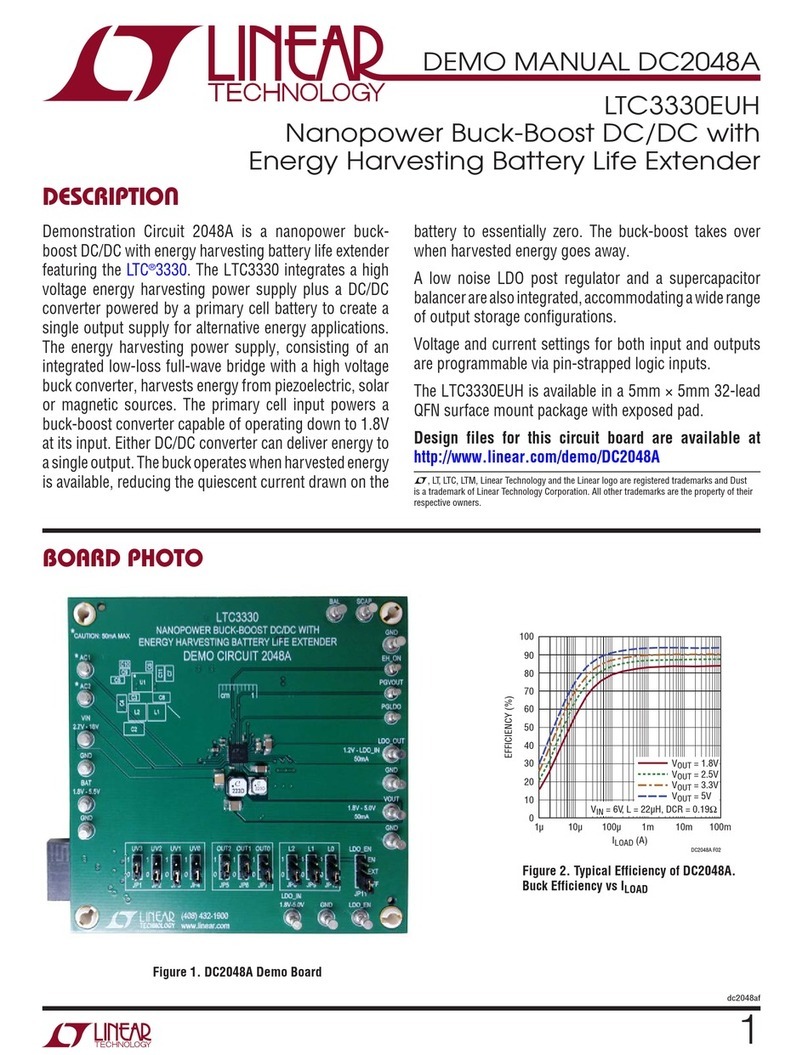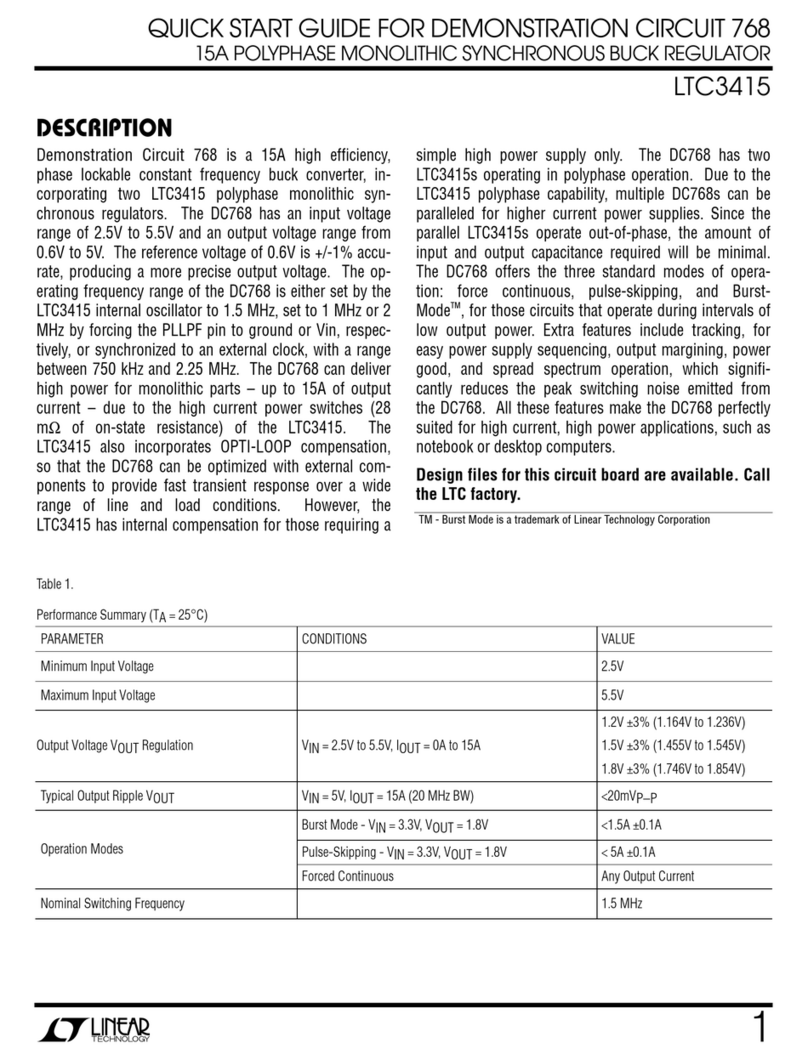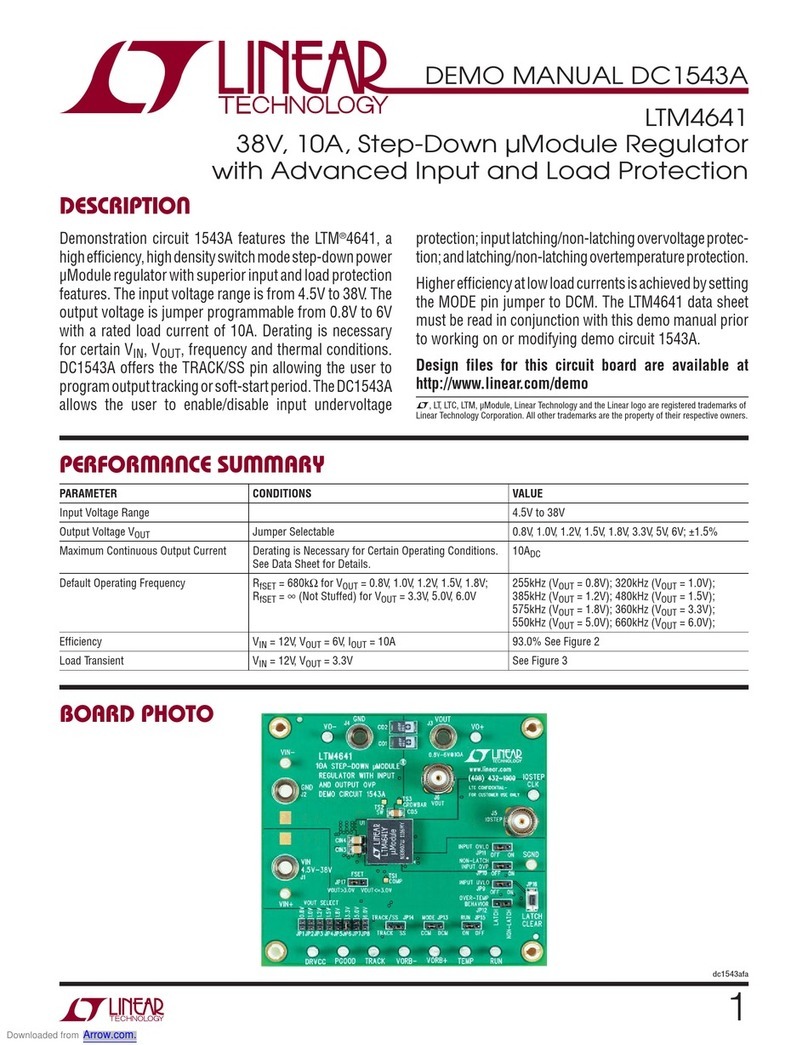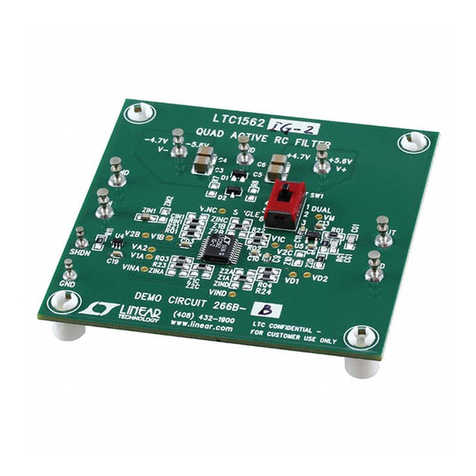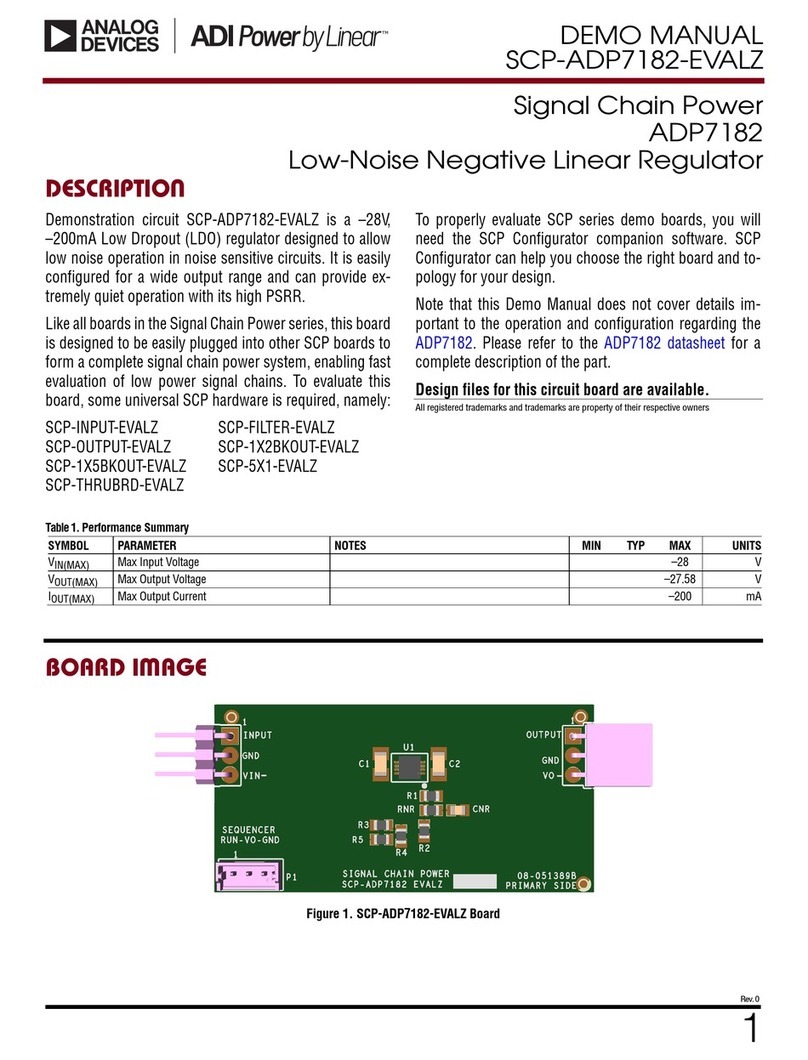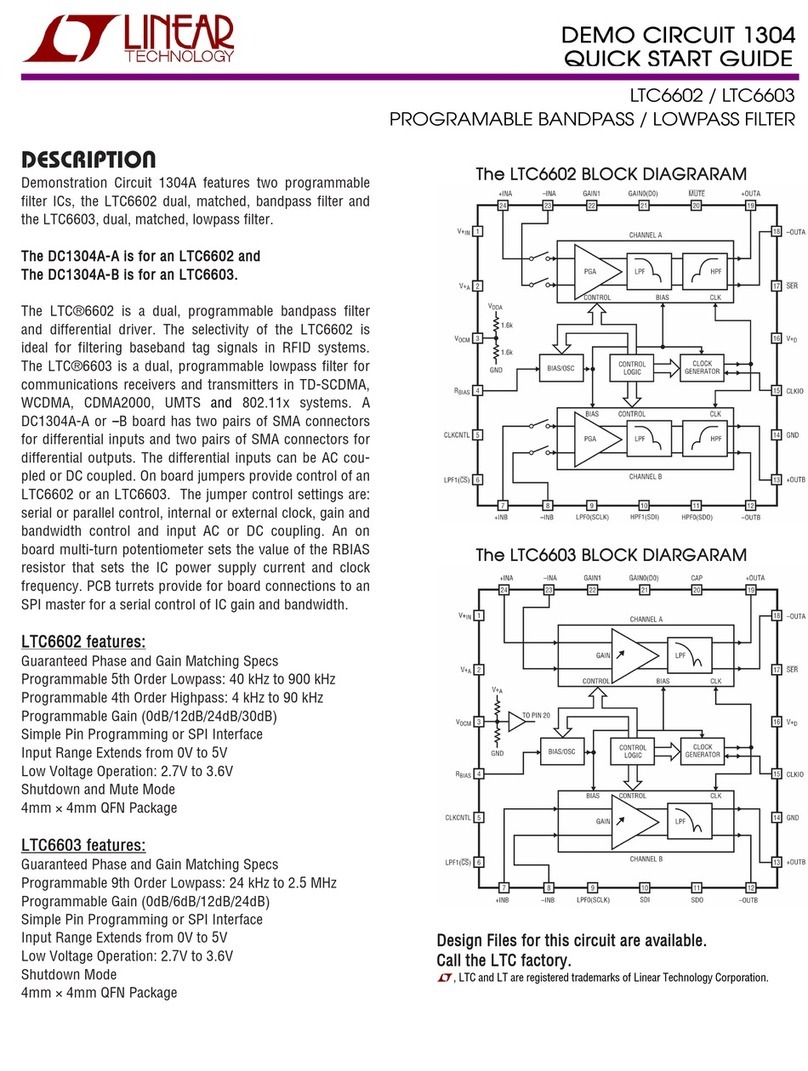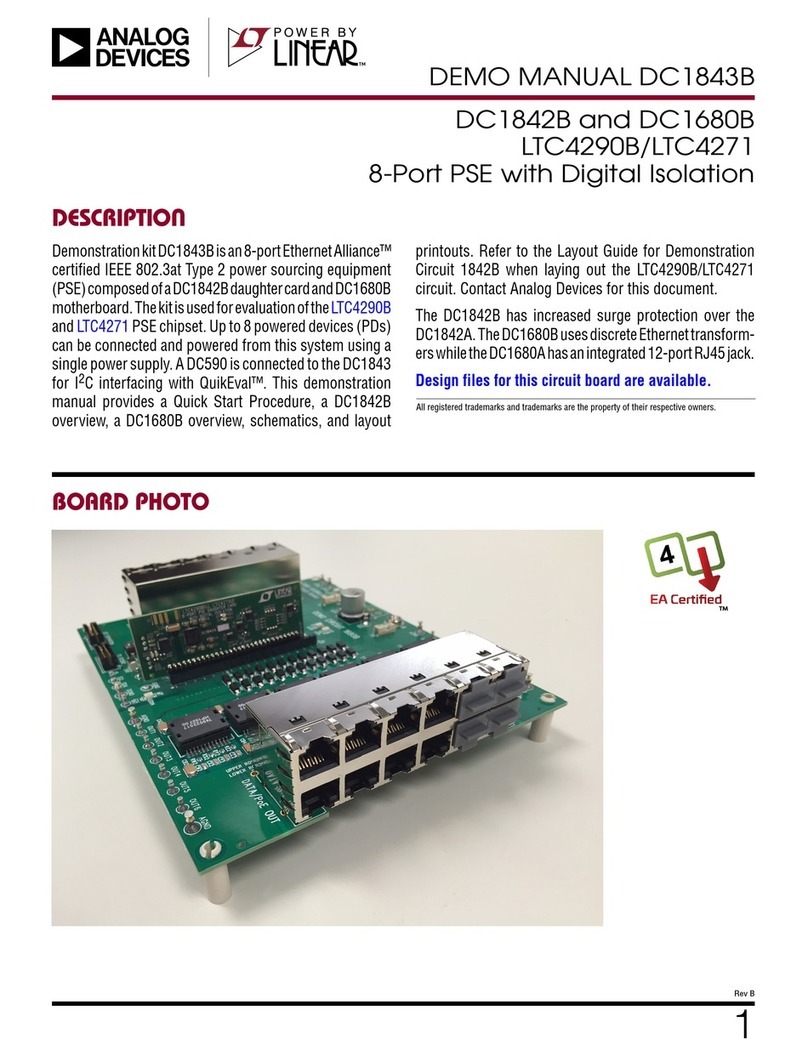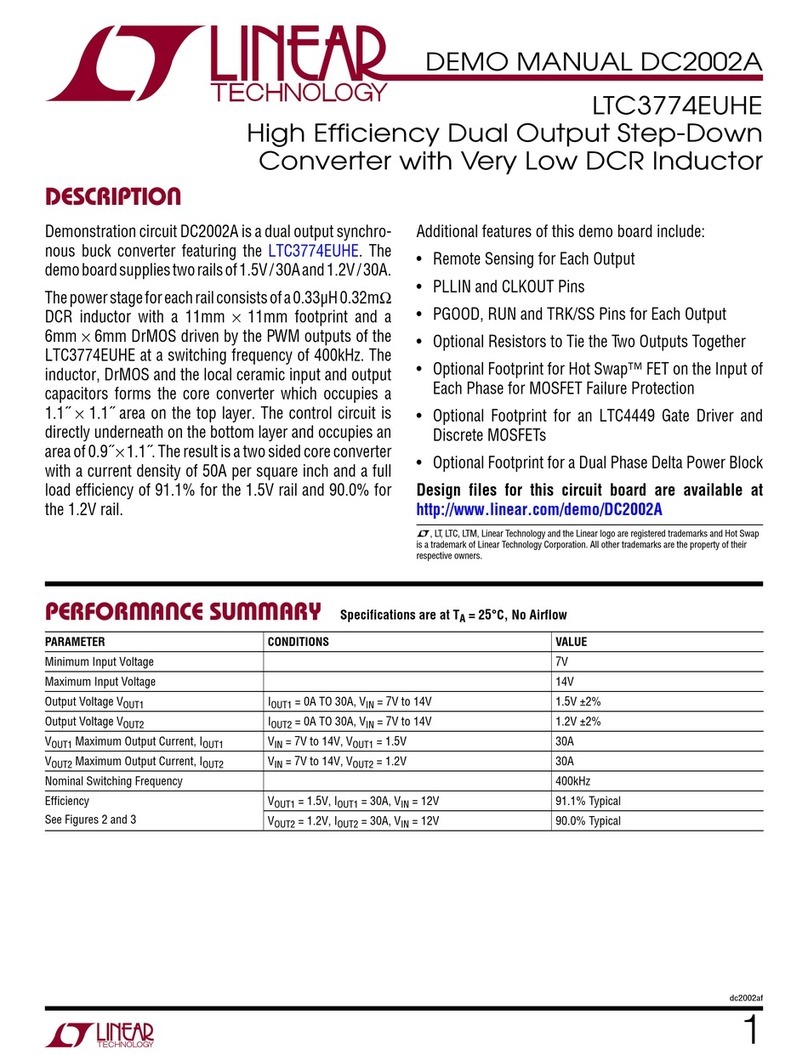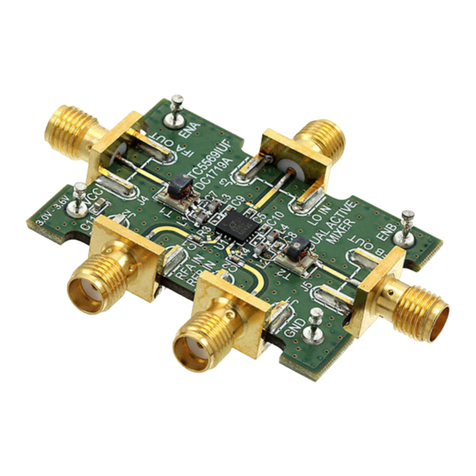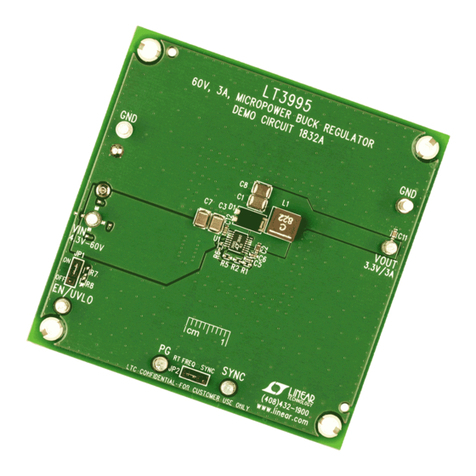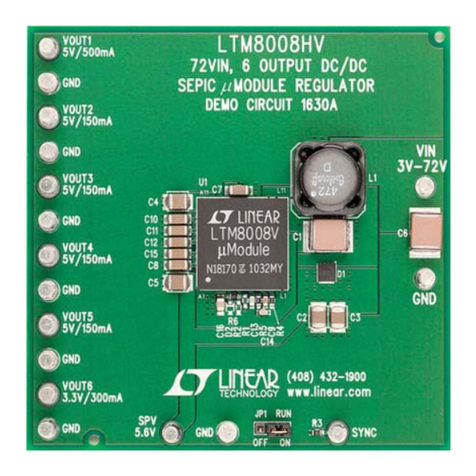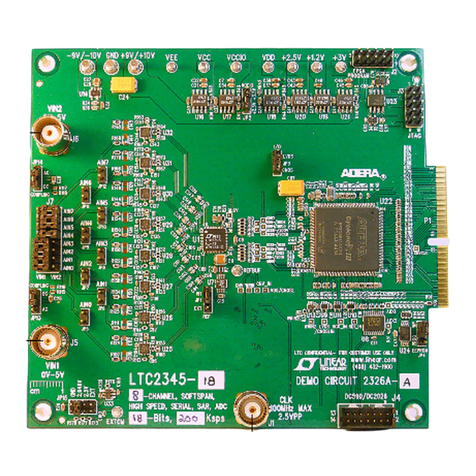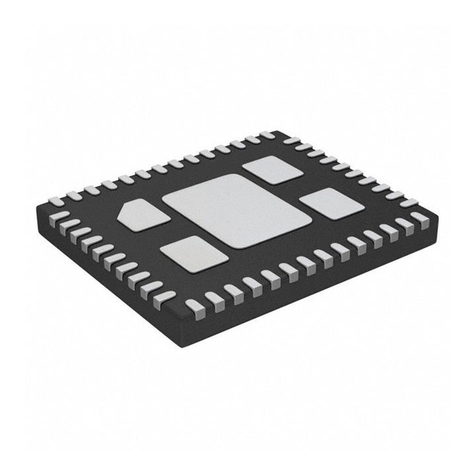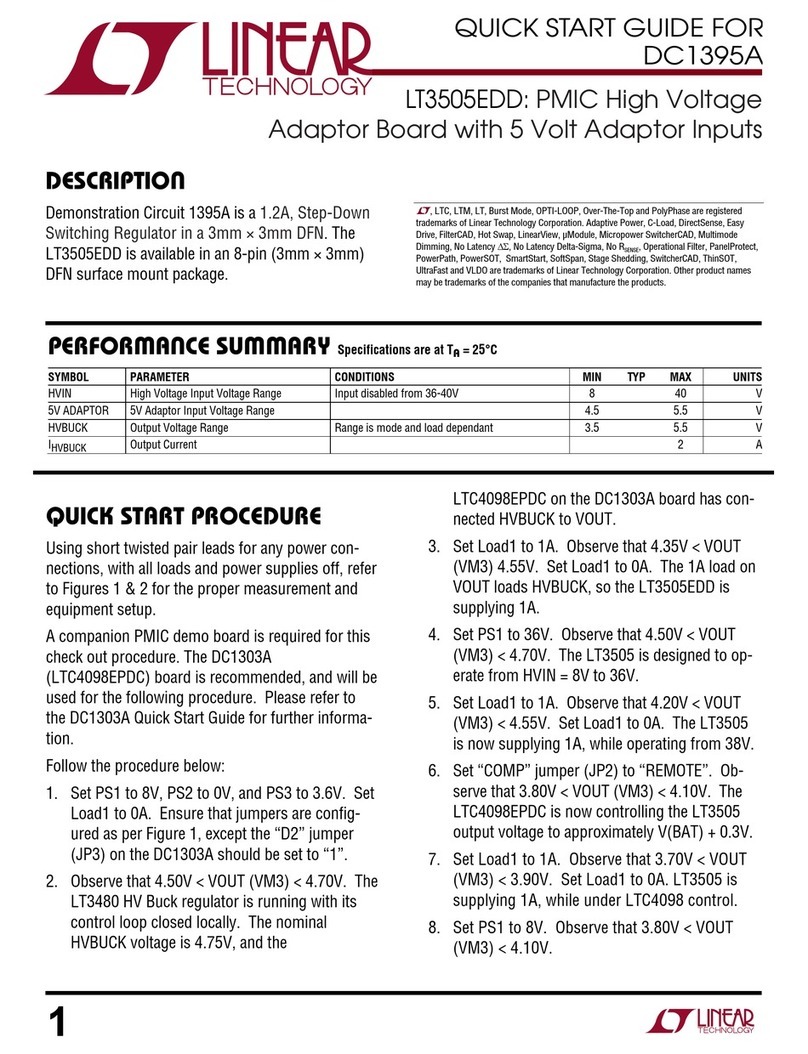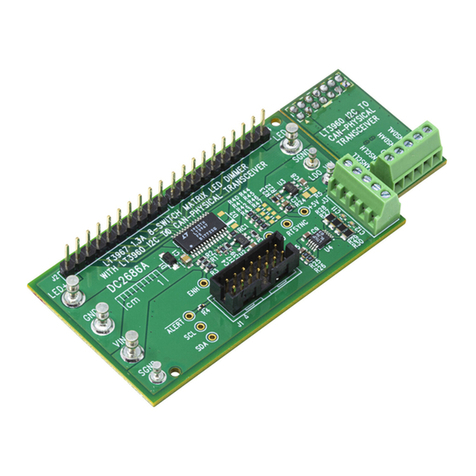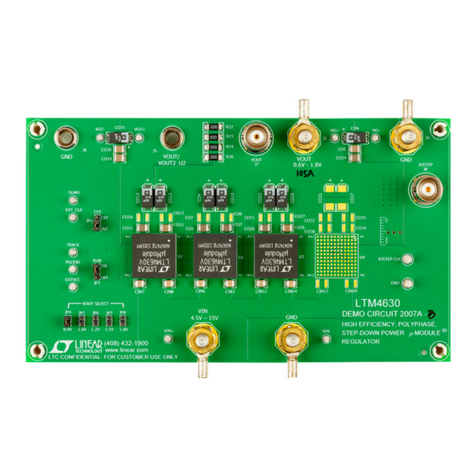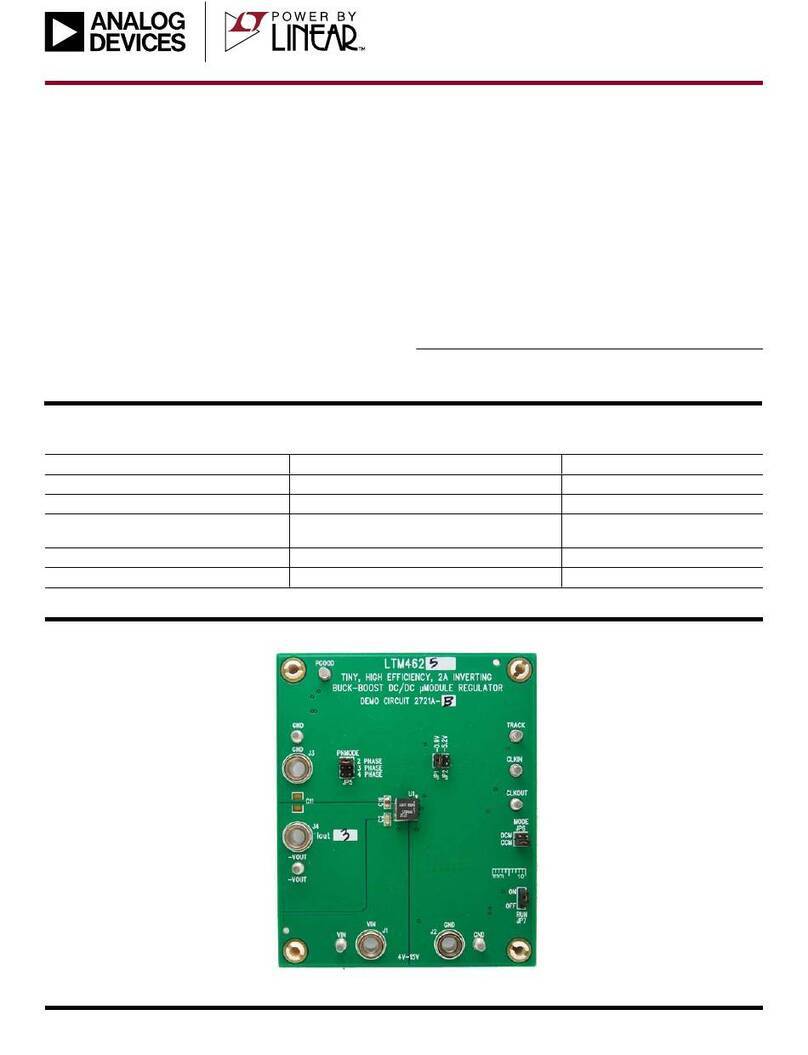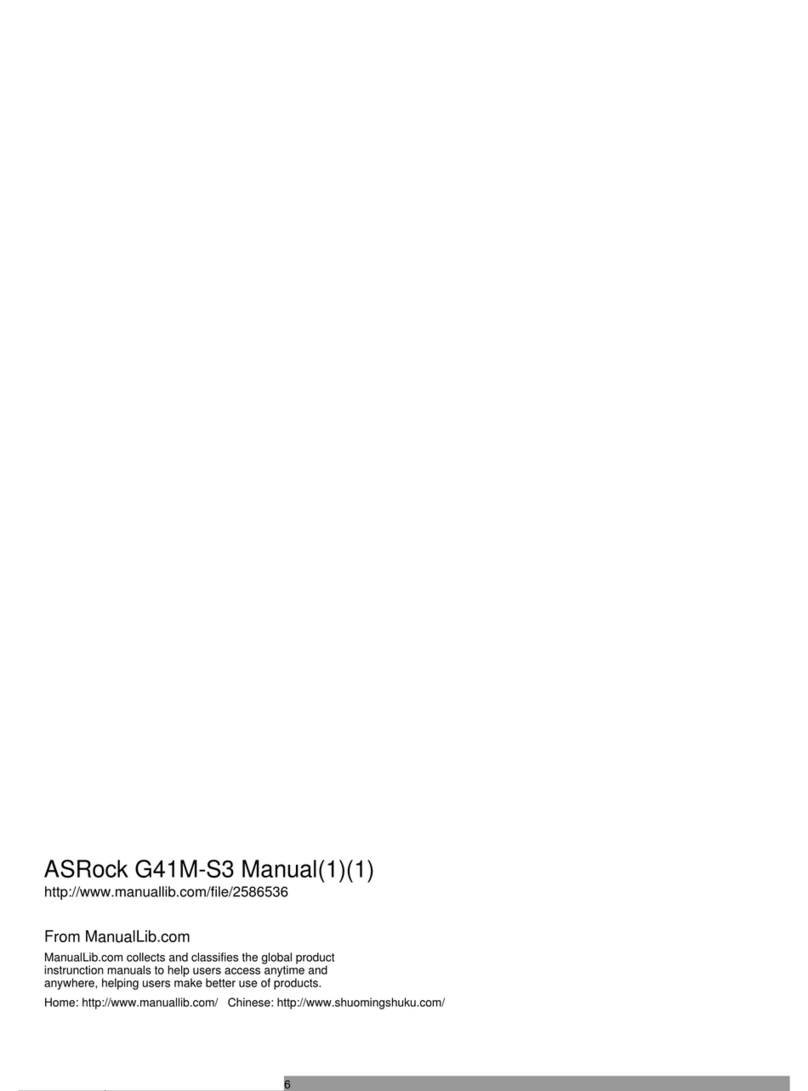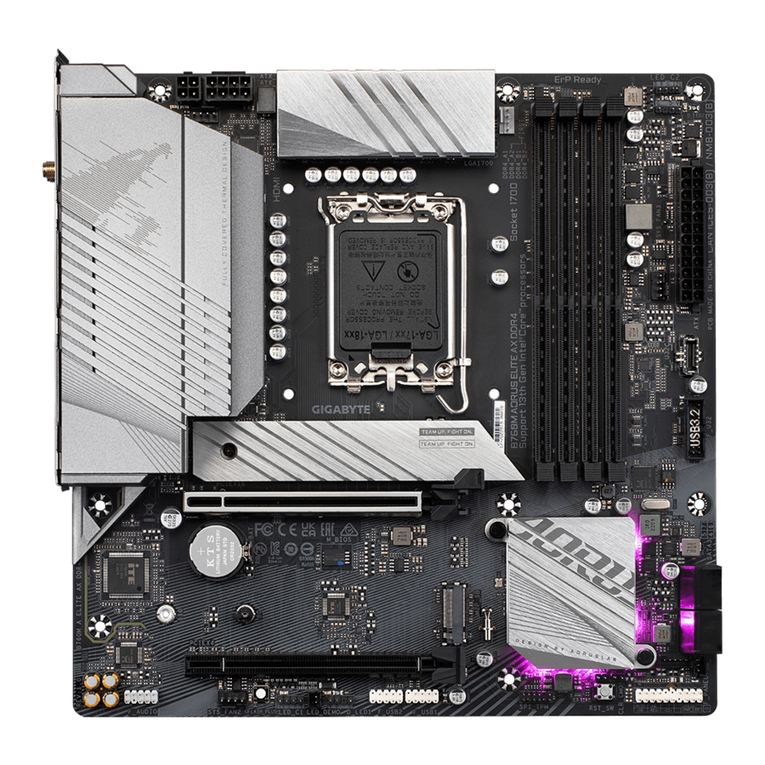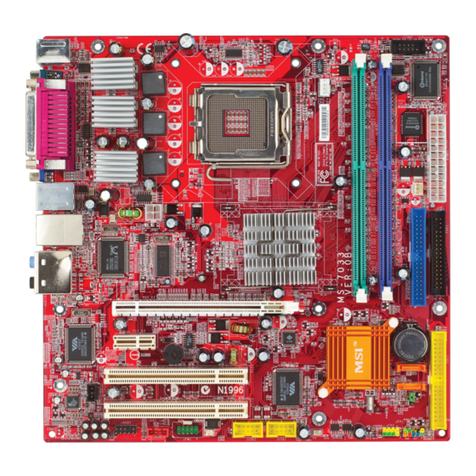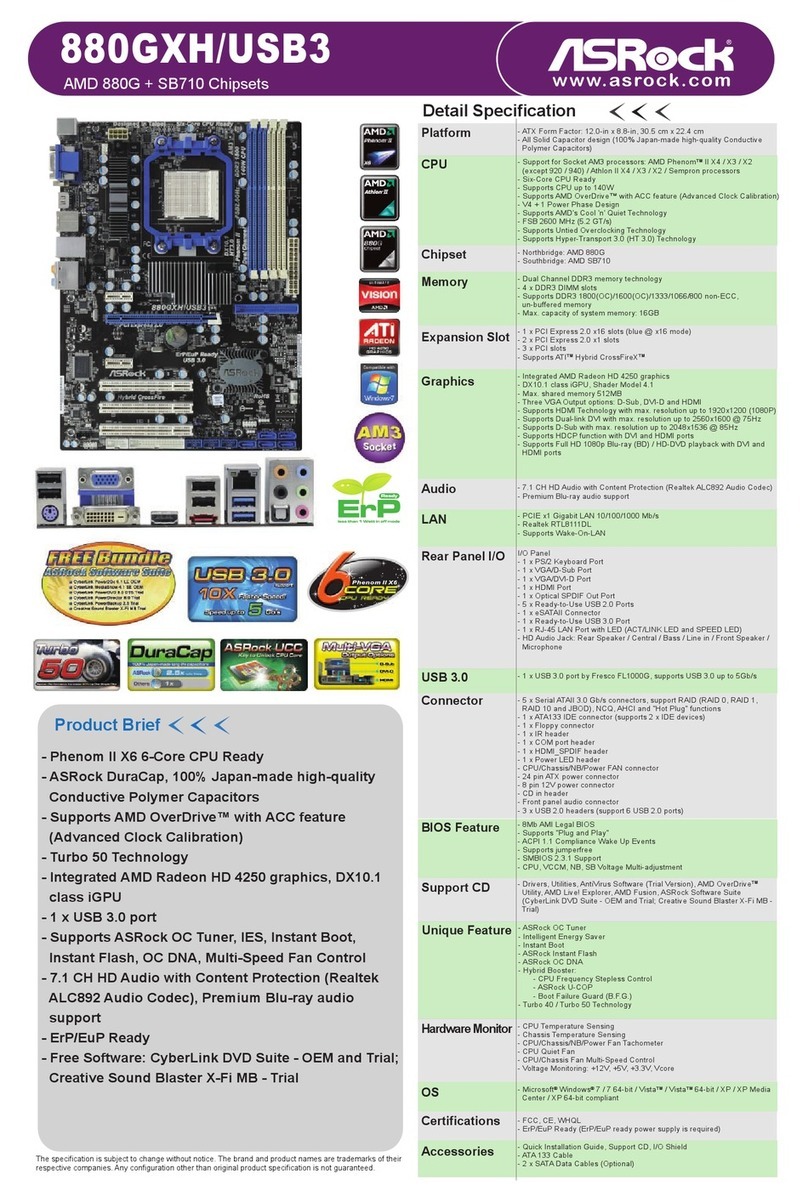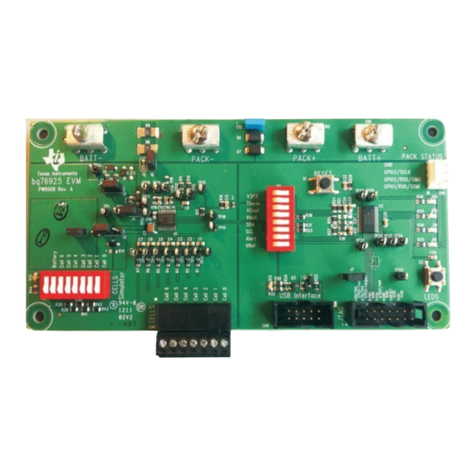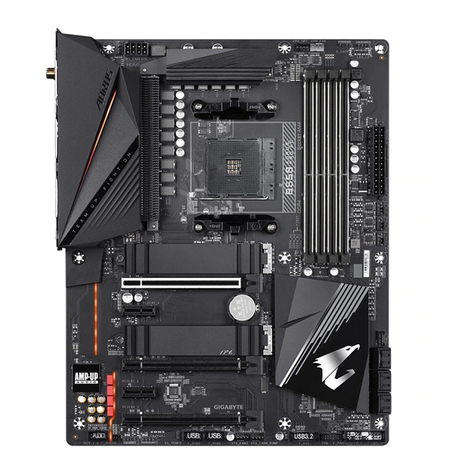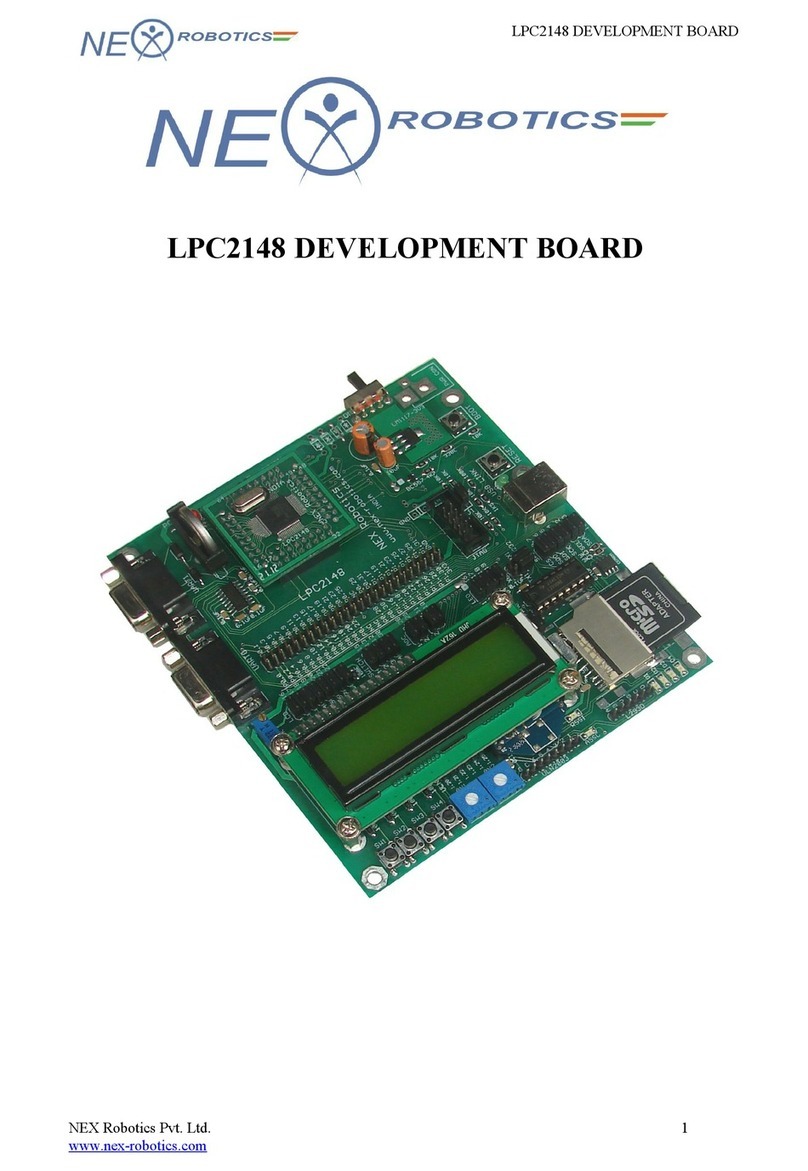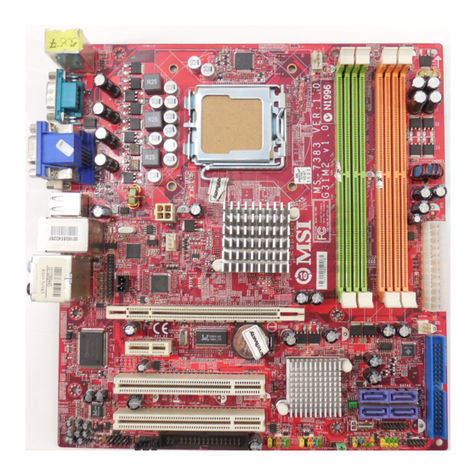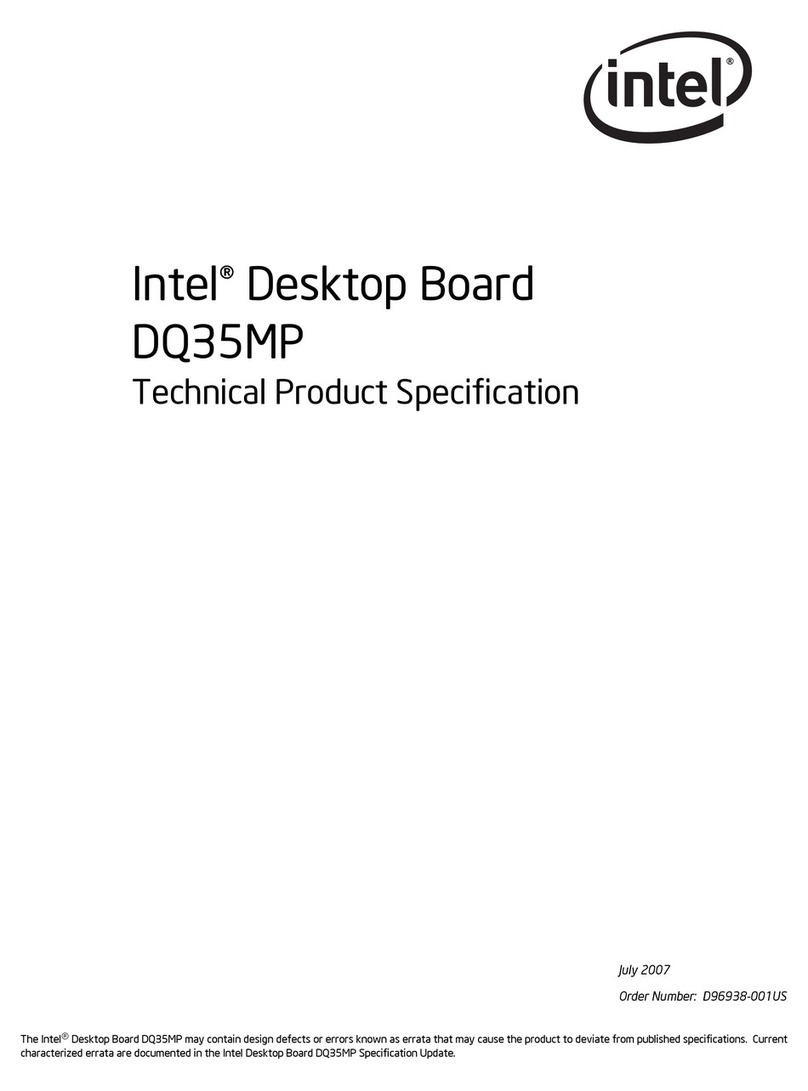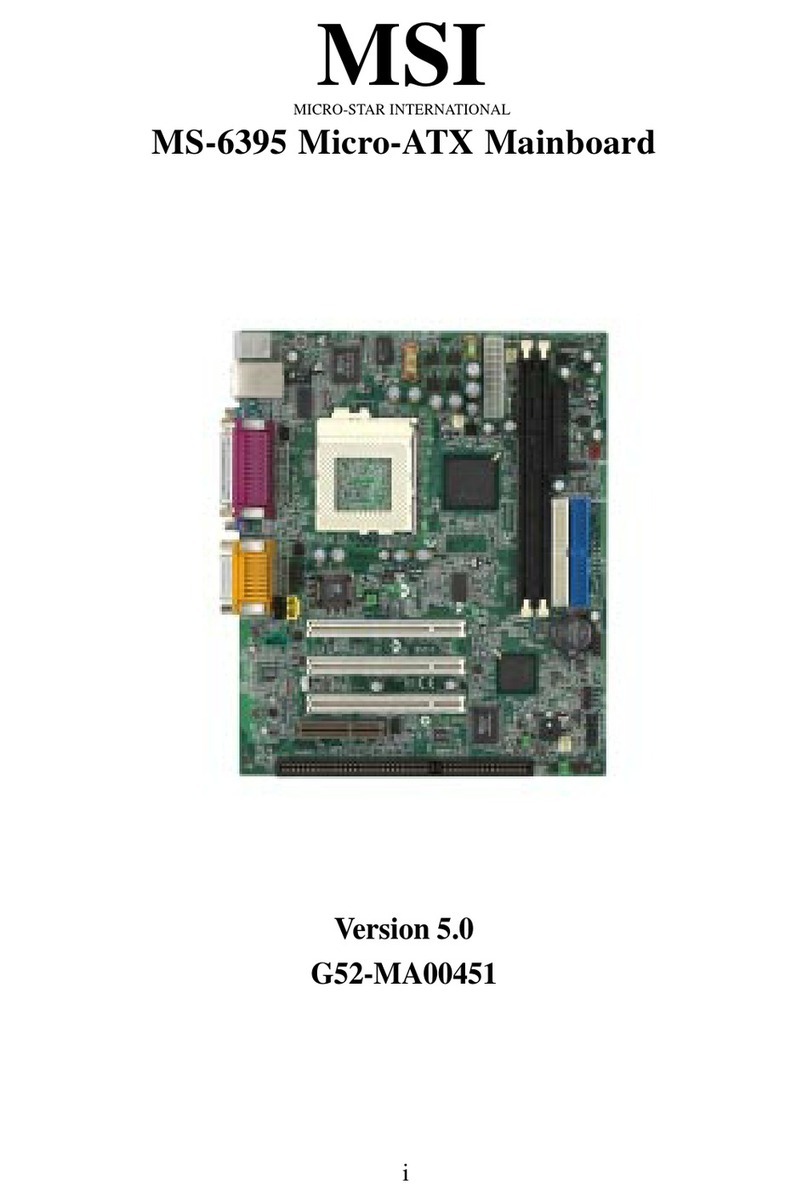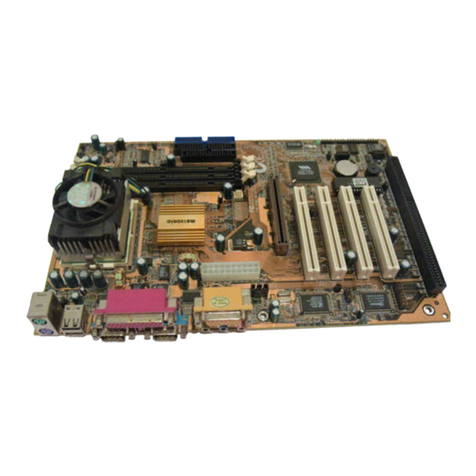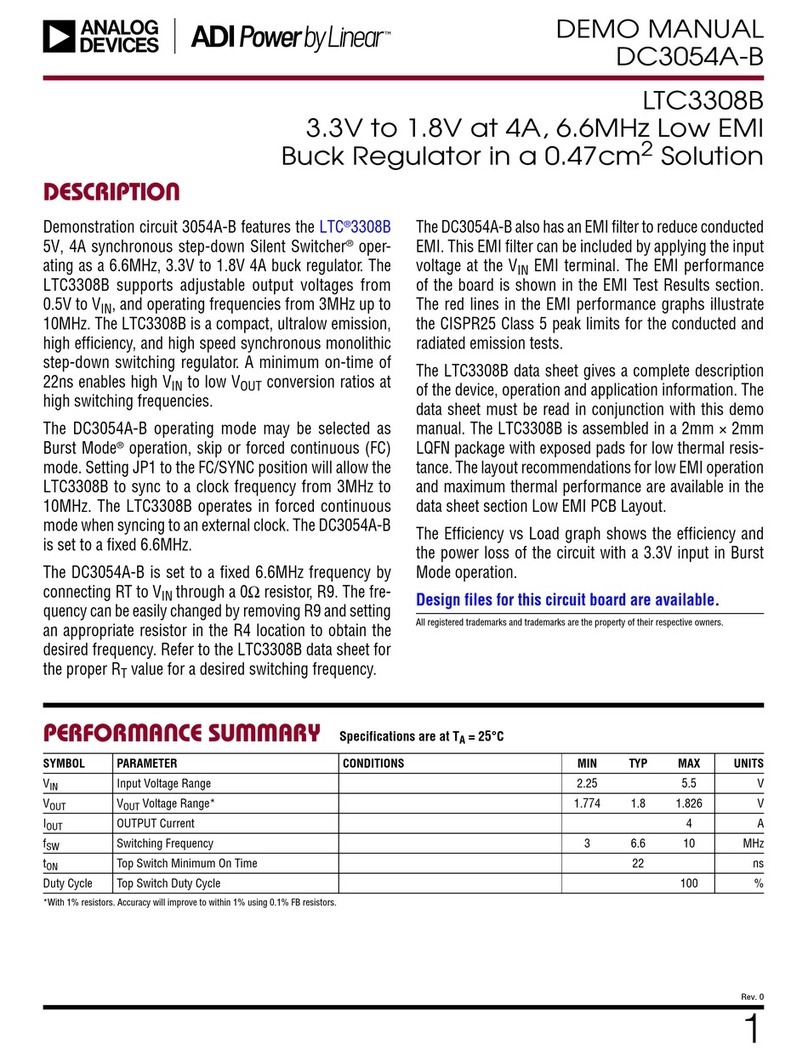
QUICK START GUIDE FOR DEMONSTRATION CIRCUIT 1524A-A
200MHZ TO 6000MHZ QUADRATURE MODULATOR WITH ULTRAHIGH OIP3
3
APPLICATION NOTE
ABSOLUTE MAXIMUM RATINGS
NOTE:
Stresses beyond Absolute Maximum Ratings may
cause permanent damage to the device. Exposure to
any Absolute Maximum Rating condition for extended
periods may affect device reliability and lifetime.
Supply Voltage ...................................................3.8V
Common Mode Level of BBPI, BBMI and
BBPQ, BBMQ ....................................................0.55V
Voltage on Any Pin ......................-0.3V to V
CC
+ 0.3V
T
JMAX
.............................................................. 150°C
Operating Temperature Range ............. -40°C to 85°C
Storage Temperature Range .............. -65°C to 150°C
POWER SUPPLY CONSIDERATION
In demonstration circuit 1524A-A (see Figure 3 for
schematic), resistors R1 and R2 reduce the charging
current in the power supply bypass capacitors C1 and
C2 and reduce supply ringing during a fast power ramp-
up in case an inductive cable is connected to the V
CC
and GND. While the LTC5588-1 IC is enabled, the volt-
age drop across R1 and R2 is approximately 0.15V. The
supply voltages applied directly to the chip can be
monitored by measuring at the test points TP1 and TP2.
If the power supply used ramps up slower than 7V/µs
and limits its output overshoot to below 3.8V, R1 and
R2 can be omitted.
ENABLE INTERFACE
The EN input in demonstration circuit 1524A-A controls
the operation of the LTC5588-1 IC. When a voltage of
2V or higher is applied, the IC is turned on. When the
input voltage falls below 1V, the IC is turned off and en-
ters sleep mode. If the EN input is not connected, the
LTC5588-1’s 100k
Ω
on-chip pull-up resistor assures
the IC is enabled. The voltage applied to the EN input
must never exceed V
CC
by more than 0.3V. Surpassing
this limit may cause permanent damage to the IC.
BASEBAND INPUT INTERFACE
Demonstration circuit 1524A-A has two channels of
high impedance differential inputs to which external I
and Q baseband signals can be applied. BBPI and BBMI
are the differential I-channel baseband inputs. BBPQ
and BBMQ are the differential Q-channel baseband in-
puts.
Because the LTC5588-1 baseband inputs’ single-ended
impedance is -3k each, it is important to keep the
source resistance low enough such that the parallel
value remains positive for the entire baseband fre-
quency range.
A common-mode voltage of 0.5V (maximum 0.55V)
must be externally applied to the baseband inputs for
proper operation. In any case, the baseband inputs
must NOT be left floating to avoid damages to the
LTC5588-1 IC.
LO INPUT INTERFACE
The standard demonstration circuit 1524A-A can accept
either single-ended or differential LO inputs. If single-
ended LO input is used, the LO signal should be applied
to the LOM port, and the LOP port should be terminated
in 50
Ω
for best image rejection performance. In most
cases, single-ended LO drive should be sufficient.
However, the LOP and LOM inputs can also be driven
differentially when an exceptionally low large-signal
output noise floor is required.
Demonstration circuit 1524A-A’s LO inputs are opti-
mized for 600MHz to 6GHz operations with better than
10dB input return loss. At lower LO frequencies, the
image rejection and the large-signal noise performance
can be improved with higher LO drive levels. However,
if the single-ended drive level causes internal clipping,
the LO leakage degrades. Using a balun such as the
Anaren B0310J50100A00 increases the LO drive level
without internal clipping and provides a relatively
broadband LO port impedance match. The balun (U2)
can be installed by removing the DC blocking capacitors
C5 and C6. However, for this particular balun, an exter-
nal DC block is required.
Refer to the LTC5588-1 datasheet for more information
and impedance data.









